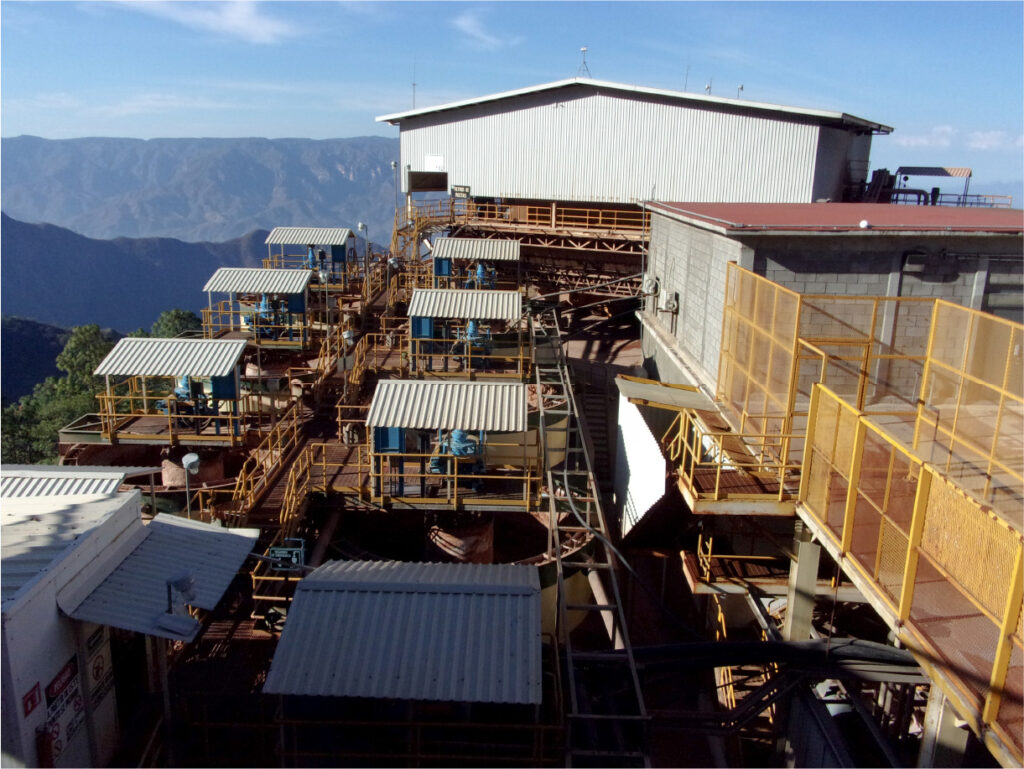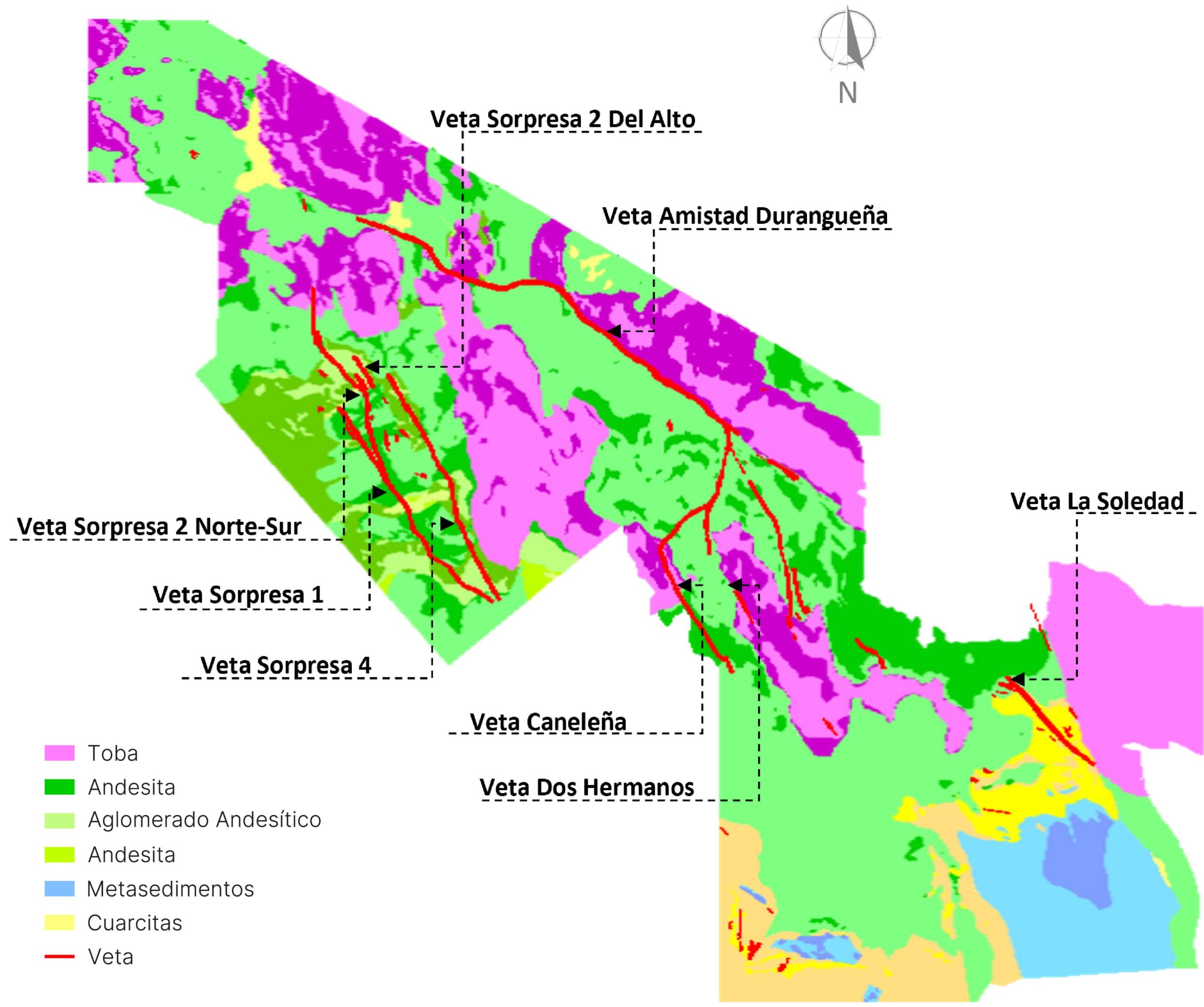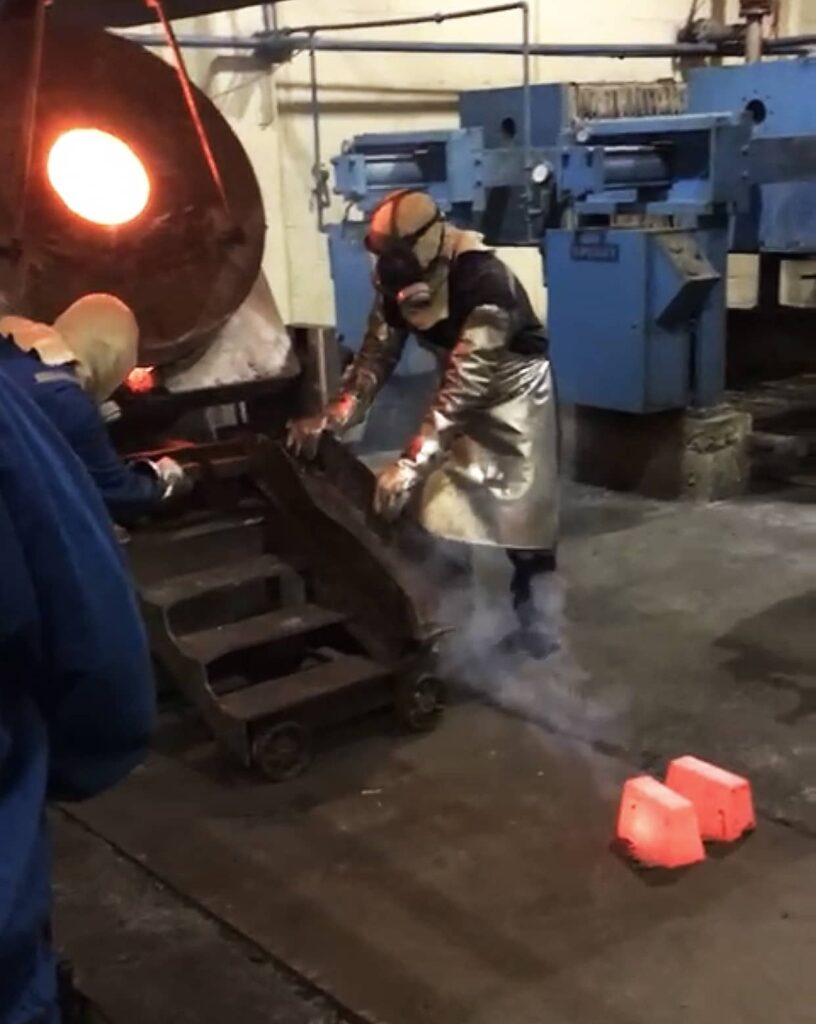
La Sorpresa consists of a mining district comprised of three mining areas that include numerous mineralized structures, hosted by tertiary volcanic rocks (andesites and rhyolites) of the SMO at elevations that vary from 2,100
to 2,500 meters above sea level (masl).
Primary mineralization at depth is hosted by sulfides, which contains economic metals such as gold, silver, lead, zinc, and copper.
The district is mainly hosted by the Lower Volcanic Complex (LVC) andesites, which are estimated to be 45 to 100 million years old.
This system includes volcanic and plutonic rocks dated from Upper Cretaceous to Lower Tertiary (Paleocene), with regional high propylitic alteration.
The Upper Volcanic Complex (UVC) covers the andesites, and it consists of a series of rhyolites and clastic rocks with an estimated thickness of approximately 1,000 m, originated by an estimated continuous volcanism from 34 to 27-23 million years ago.
Primary mineralization at depth is hosted by sulfides, which contains economic metals such as gold, silver, lead, zinc, and copper.
The district is mainly hosted by the Lower Volcanic Complex (LVC) andesites, which are estimated to be 45 to 100 million years old.
This system includes volcanic and plutonic rocks dated from Upper Cretaceous to Lower Tertiary (Paleocene), with regional high propylitic alteration.
The Upper Volcanic Complex (UVC) covers the andesites, and it consists of a series of rhyolites and clastic rocks with an estimated thickness of approximately 1,000 m, originated by an estimated continuous volcanism from 34 to
27-23 million years ago.

Resource estimate is 43-101 compliant and was calculated by an independent American engineering and science firm. Wireframes were created for each vein and used to create a 3D block model. It includes Au and Ag for each block and was calculated using inverse distanced squared methods.

| Classification | Cutoff Au (g/t) | Tonnes | Grade Au (g/t) | Grade Ag (g/t) | Au oz | Ag oz | AuEq Oz |
| Measured | 1.90 | 445,000 | 7.01 | 63 | 100,300 | 896,700 | 112,700 |
| Indicated | 1.90 | 288,200 | 6.58 | 58 | 60,900 | 539,900 | 68,000 |
| Measured + Indicated | 1.90 | 733,200 | 6.84 | 61 | 161,200 | 1,436,600 | 180,400 |
| Inferred | 1.90 | 667,900 | 8.32 | 60 | 178,600 | 1,280,500 | 195,700 |

Note: Please scroll horizontally
to view all contents of the table.
13 mapped mineralized structures with
a cumulative vein strike of 12 km.
The La Sorpresa district is divided into three zones,
which are summarized below.
Zone 1 (San Miguel)
This zone includes the veins La Sorpresa 1, La Sorpresa 2,
La Sorpresa Baja 2, and La Sorpresa 4.
Zone 2 (Plomosas)
This zone includes the veins La Sorpresa 1 Sur, Plomosas,
Dulces Nombres, and a portion of La Sorpresa 4.
Zone 3 (Caneleña)
This zone includes Amistad Durangueña, Caneleña,
Dos Hermanos, and Polvos de Oro veins, as well as other prospects.
The La Sorpresa district is divided into three zones, which are summarized below.
Zone 1 (San Miguel)
This zone includes the veins La Sorpresa 1, La Sorpresa 2, La Sorpresa Baja 2, and La Sorpresa 4.
Zone 2 (Plomosas)
This zone includes the veins La Sorpresa 1 Sur, Plomosas, Dulces Nombres, and a portion
of La Sorpresa 4.
Zone 3 (Caneleña)
This zone includes Amistad Durangueña, Caneleña, Dos Hermanos, and Polvos de Oro veins,
as well as other prospects.
From surface:
Underground:
Mining and metallurgical testing and mine
production has been carried out throughout
the historical development along some of the mineralized structures.
Mining and metallurgical testing and mine production has been carried out throughout
the historical development along some of the mineralized structures.
Further exploration potential is located in the Amistad Durangueña, Caneleña and La Tauna veins.
Further exploration potential is located in the
Amistad Durangueña, Caneleña and La Tauna veins.